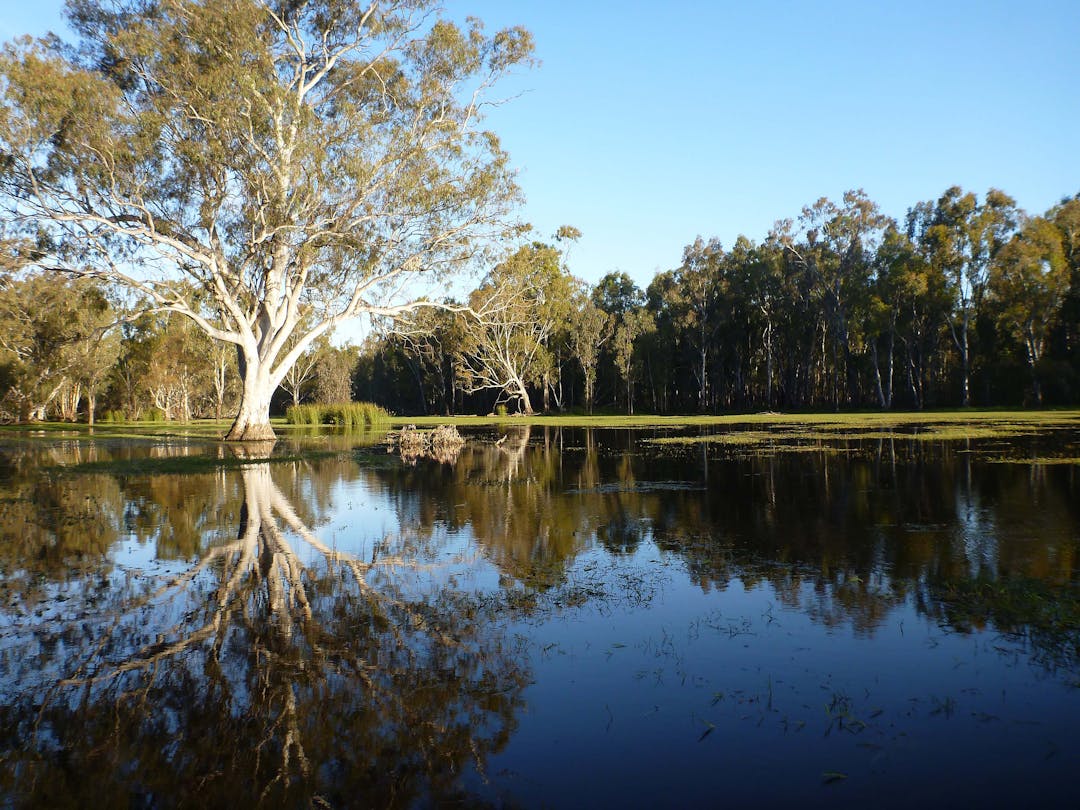Research Theme Lead: CSIRO
Having reliable knowledge of the characteristics and movement of water, under current and future climates, is essential to informing water resources management and planning. The Hydrology theme will focus on the two ends of the flow spectrum: low flows and floodplain flows.
The low flow component will focus on improving the simulation of low flows that are important to maintain environmental/refugia conditions, avoid the risk of poor water quality, and to support downstream water uses.
This is a long standing and complex problem faced by hydrologists and water authorities across Australia (and the world) that needs to be addressed strategically and fit-for-purpose for the applications. The hydrological processes controlling low flows are markedly different in perennial and ephemeral streams (e.g. southern versus northern Basin), and in unregulated and regulated systems. New methods, building on current knowledge and modelling, will be developed to improve low flow estimation in unregulated and regulated river reaches, to better inform ecological outcomes and water resources planning.
The MDB has numerous floodplain reaches where river flows can overtop the river bank and spread across the floodplain during high flows (from natural flood events or from controlled storage and/or environmental flow releases). To support and enhance water resource management, it is important to know how much of flow goes to the floodplain under different flow regimes and for how long, how much of it fills up wetlands, evaporates and infiltrates, and how much of it eventually returns to the river. This project has two research activities to address knowledge gaps in (i) predicting flood inundation extent, depth and duration and (ii) predicting floodplain volumes.
Other research under the Hydrology theme related to real time operations and environmental water delivery are still undergoing co-design. This project will work with MDBA managers and operators, CEWO, state water agencies to investigate how to improve river operations.
Summary of key questions, outputs, and outcomes for the Hydrology theme.
| Key research questions | Key research outputs and outcomes |
|---|
- How can low flow prediction be improved to support water resources management planning?
- How can floodplain flow volumes, components, and inundation prediction be improved to support environmental watering and water resources planning?
- How can adaptation through enhanced river operations and water resources management improve water outcomes?
- How to better disentangle and model the impacts of climate and development drivers on the hydrology of the basin?
| - Enhanced low flow outcomes (for ecosystems, water quality and communities) through water resources management and planning informed by improved low flow prediction and modelling.
- Enhanced floodplain outcomes (for ecosystems and communities) through environmental watering and water resources management informed by predictive floodplain inundation model.
- Still in development related to operations and environmental water delivery
- Improved understanding, quantification and communication of drivers of northern Basin hydrology (including uncertainty and gaps in knowledge) supported by evidence-based science.
|
Any enquiries can be sent to MDWERP@mdba.gov.au.
Research Theme Lead: CSIRO
Having reliable knowledge of the characteristics and movement of water, under current and future climates, is essential to informing water resources management and planning. The Hydrology theme will focus on the two ends of the flow spectrum: low flows and floodplain flows.
The low flow component will focus on improving the simulation of low flows that are important to maintain environmental/refugia conditions, avoid the risk of poor water quality, and to support downstream water uses.
This is a long standing and complex problem faced by hydrologists and water authorities across Australia (and the world) that needs to be addressed strategically and fit-for-purpose for the applications. The hydrological processes controlling low flows are markedly different in perennial and ephemeral streams (e.g. southern versus northern Basin), and in unregulated and regulated systems. New methods, building on current knowledge and modelling, will be developed to improve low flow estimation in unregulated and regulated river reaches, to better inform ecological outcomes and water resources planning.
The MDB has numerous floodplain reaches where river flows can overtop the river bank and spread across the floodplain during high flows (from natural flood events or from controlled storage and/or environmental flow releases). To support and enhance water resource management, it is important to know how much of flow goes to the floodplain under different flow regimes and for how long, how much of it fills up wetlands, evaporates and infiltrates, and how much of it eventually returns to the river. This project has two research activities to address knowledge gaps in (i) predicting flood inundation extent, depth and duration and (ii) predicting floodplain volumes.
Other research under the Hydrology theme related to real time operations and environmental water delivery are still undergoing co-design. This project will work with MDBA managers and operators, CEWO, state water agencies to investigate how to improve river operations.
Summary of key questions, outputs, and outcomes for the Hydrology theme.
| Key research questions | Key research outputs and outcomes |
|---|
- How can low flow prediction be improved to support water resources management planning?
- How can floodplain flow volumes, components, and inundation prediction be improved to support environmental watering and water resources planning?
- How can adaptation through enhanced river operations and water resources management improve water outcomes?
- How to better disentangle and model the impacts of climate and development drivers on the hydrology of the basin?
| - Enhanced low flow outcomes (for ecosystems, water quality and communities) through water resources management and planning informed by improved low flow prediction and modelling.
- Enhanced floodplain outcomes (for ecosystems and communities) through environmental watering and water resources management informed by predictive floodplain inundation model.
- Still in development related to operations and environmental water delivery
- Improved understanding, quantification and communication of drivers of northern Basin hydrology (including uncertainty and gaps in knowledge) supported by evidence-based science.
|
Any enquiries can be sent to MDWERP@mdba.gov.au.






